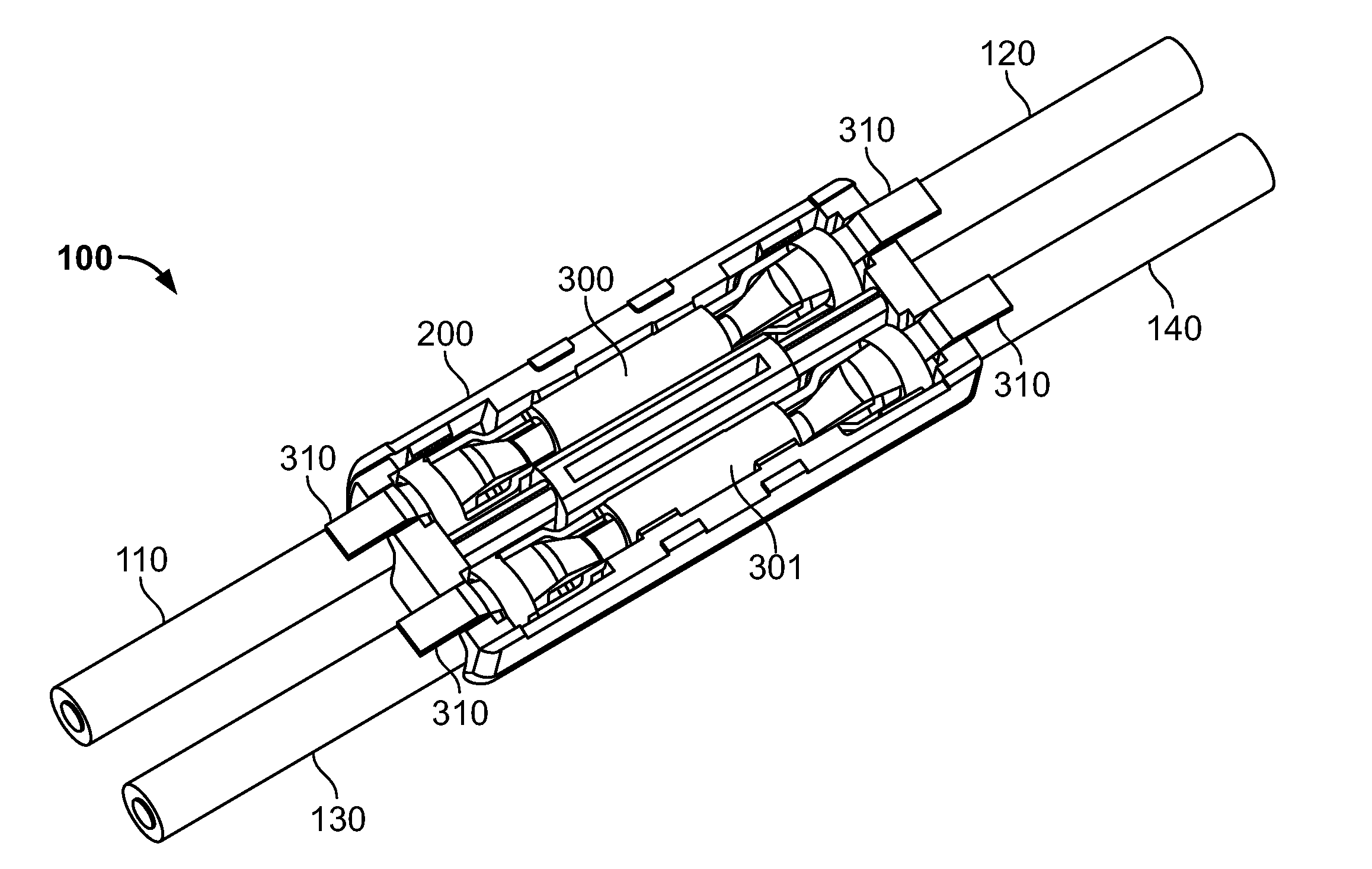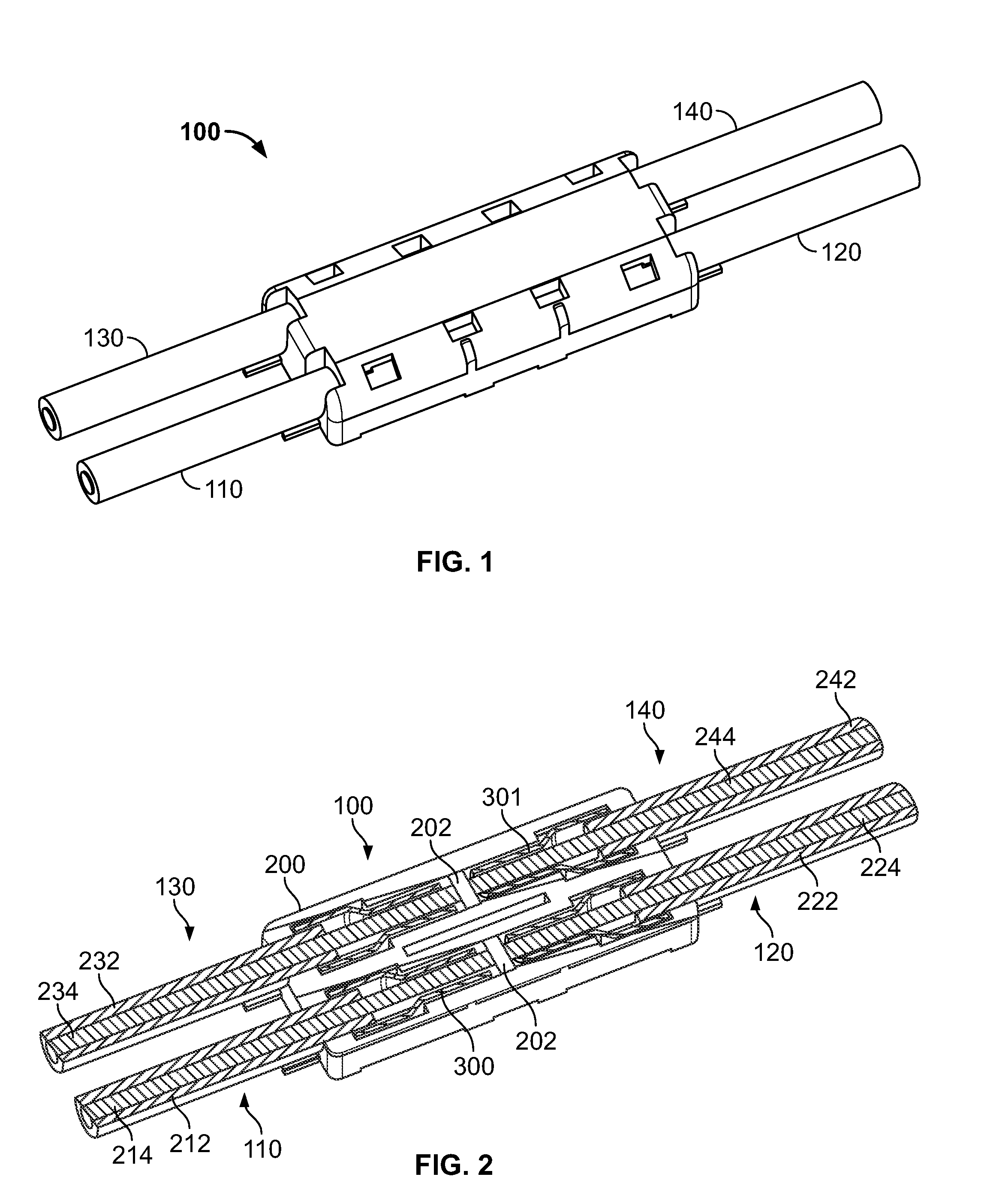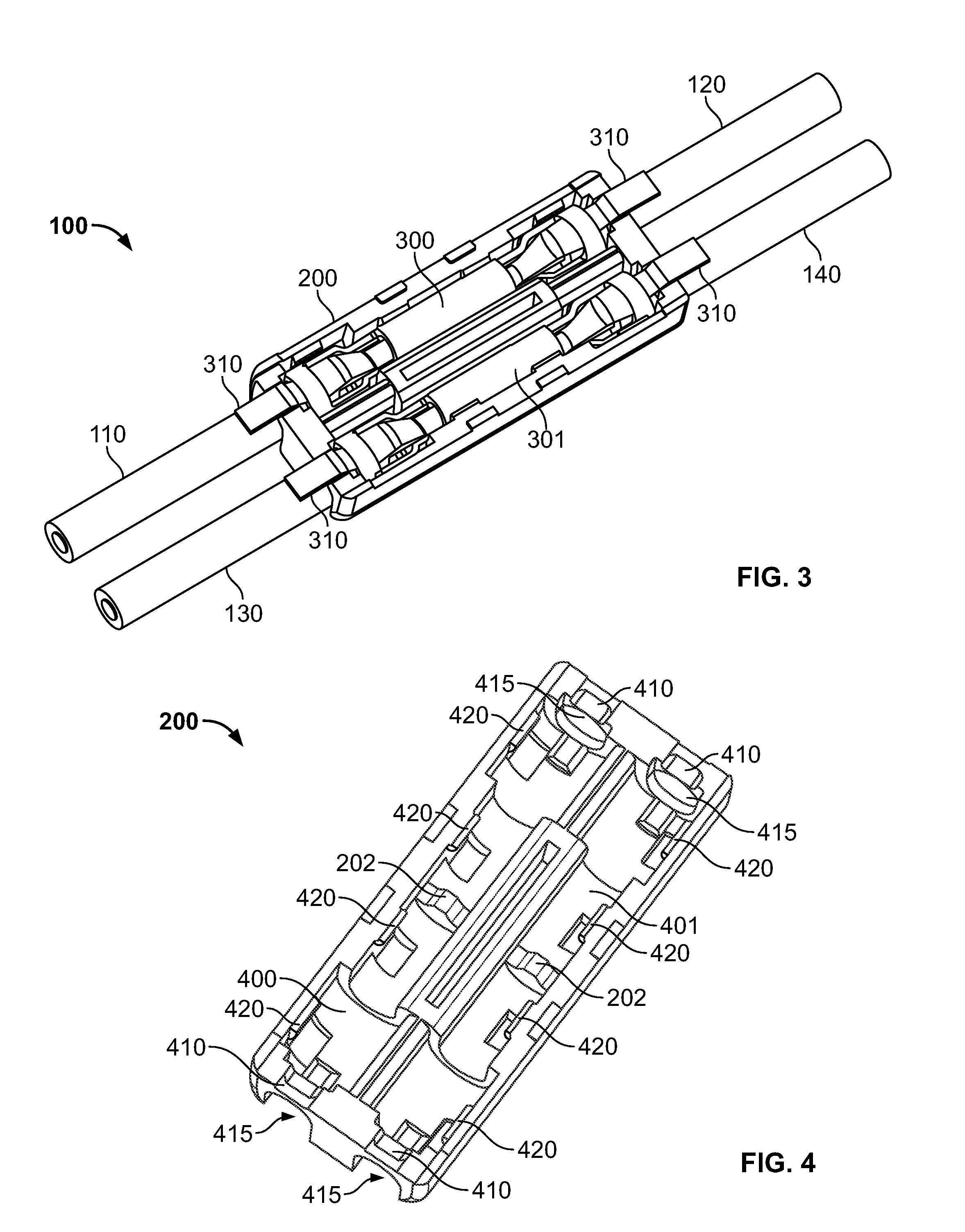Surface mount poke-in connector
a surface mount and connector technology, applied in the direction of fixing connections, coupling device connections, contact members penetrating/cutting insulation/cable strands, etc., can solve the problems of time-consuming and costly steps of soldering wire leads to the boards, and achieve the effect of reducing the shadowing of the connector by the connector's low profil
- Summary
- Abstract
- Description
- Claims
- Application Information
AI Technical Summary
Benefits of technology
Problems solved by technology
Method used
Image
Examples
Embodiment Construction
[0039]The present invention now will be described more fully hereinafter with reference to the accompanying drawings in which preferred embodiments of the invention are shown. This invention may, however, be embodied in many different forms and should not be construed as limited to the embodiments set forth herein; rather, these embodiments are provided so that this disclosure will be thorough and complete and will fully convey the scope of the invention to those skilled in the art.
[0040]Referring to FIG. 1, an exemplary embodiment of the feed-through surface mount poke-in electrical connector 100 is depicted. The connector 100 provides a first electrical connection to a first pair of wires that includes a first wire 110 and second wire 120, and a second electrical connection to a second pair of wires that includes a third wire 130 and a fourth wire 140. The connector 100 may also connect the first wire 110 and the second wire 120 to an electrical trace (not shown) on an electrical ...
PUM
 Login to View More
Login to View More Abstract
Description
Claims
Application Information
 Login to View More
Login to View More - R&D
- Intellectual Property
- Life Sciences
- Materials
- Tech Scout
- Unparalleled Data Quality
- Higher Quality Content
- 60% Fewer Hallucinations
Browse by: Latest US Patents, China's latest patents, Technical Efficacy Thesaurus, Application Domain, Technology Topic, Popular Technical Reports.
© 2025 PatSnap. All rights reserved.Legal|Privacy policy|Modern Slavery Act Transparency Statement|Sitemap|About US| Contact US: help@patsnap.com



